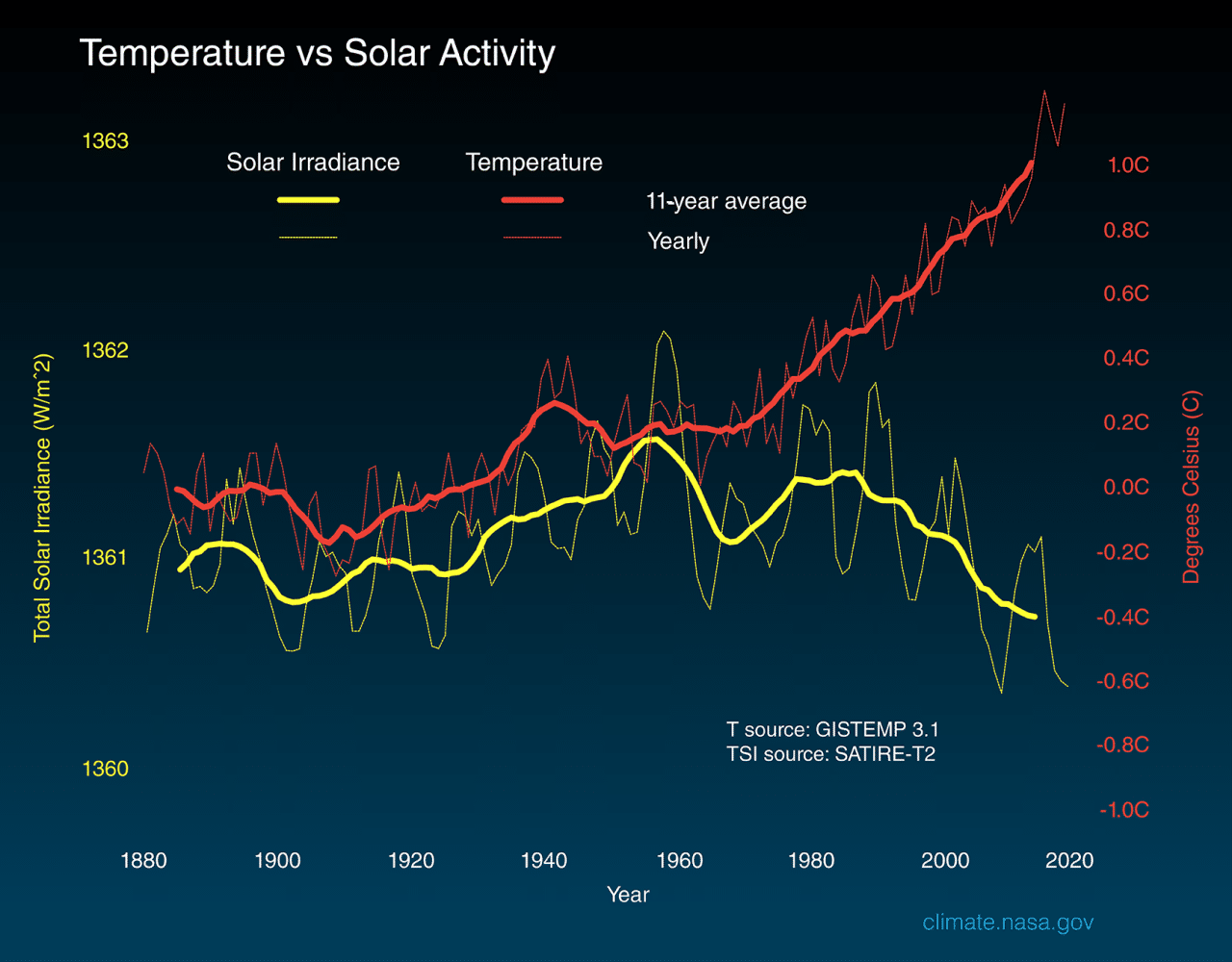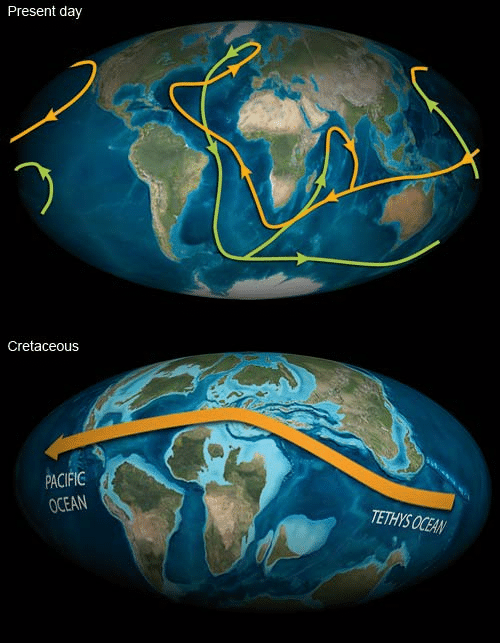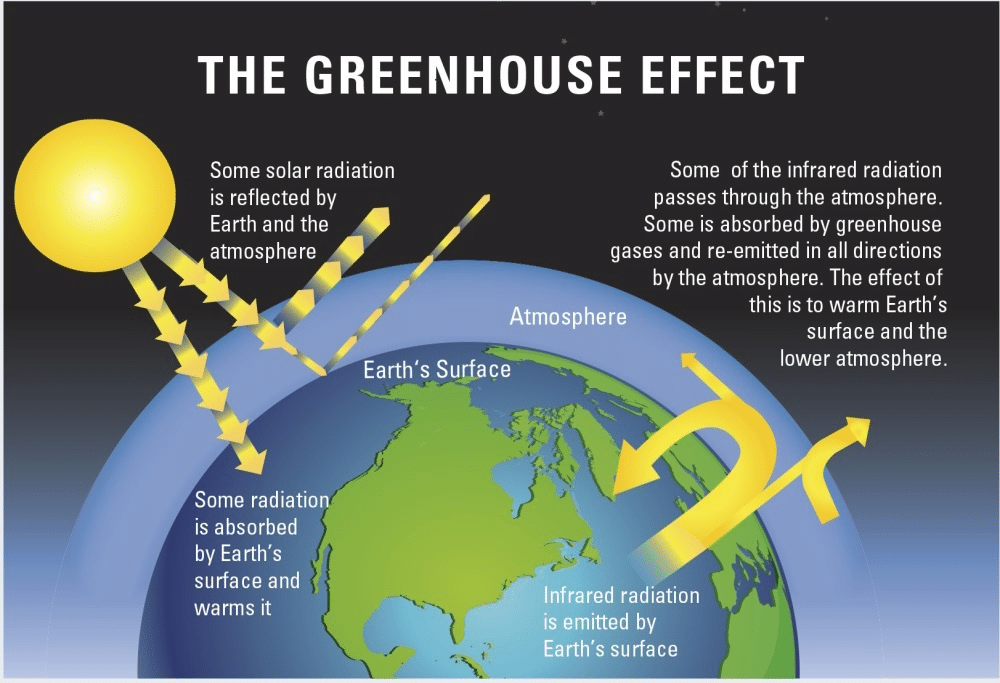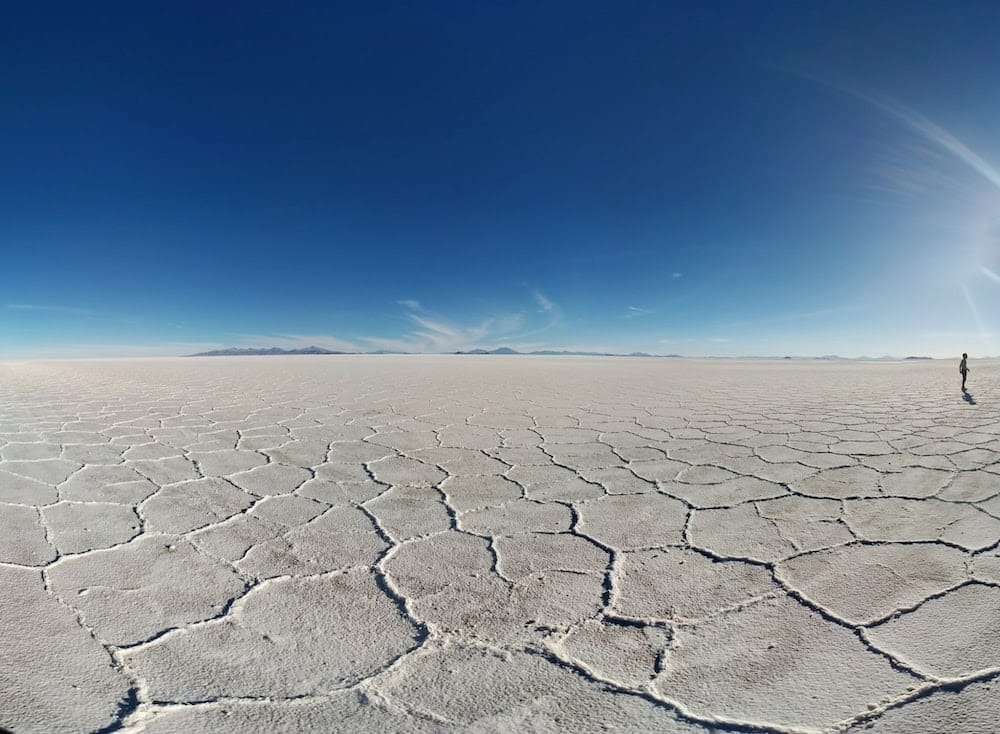
What causes climate to vary?
Solar radiation is distributed unevenly across the Earth’s surface. Low latitudes (around the equator) receive more radiation than high latitudes (near the north and south poles). The ocean does not absorb (or reflect) incident solar radiation in the same way as continental surfaces. These imbalances are compensated for by the emission of long-wave infrared radiation from surfaces heated by short-wave solar radiation.

Significant temperature differences between the polar regions and the intertropical zone in turn induce movements in the air (winds) and ocean (surface currents). These movements aim to reduce temperature differences by transporting heat from low latitudes to the poles.
Ocean and continental surfaces are subject to intense evaporation, which feeds a hydrological cycle. Water vapor rises in the atmosphere, condenses at higher altitudes, is transported by winds, and precipitates as rain or snow.
The Earth’s rotation accelerates winds, which are deflected to the right in the Northern Hemisphere and to the left in the Southern Hemisphere. This phenomenon gives rise to the trade winds in the intertropical zone, and to immense eddies (anticyclones in the Northern Hemisphere).

Vast general circulation cells encircle the Earth, helping to redistribute excess water vapour from low latitudes to extratropical zones, and drying out desert regions in subtropical latitudes.
This simplified description of the average climate does not take into account inter-annual variations, over periods ranging from one to several years. These fluctuations reflect the complexity of the Earth system and the interactions between atmosphere, ocean and continental surfaces. Major climatic oscillations, such as the El Niño phenomenon and its antithesis La Niña, the Pacific Decadal Oscillation and the North Atlantic Oscillation, are thus responsible for significant year-on-year variations.
On a larger scale, the global climate evolves under the action of external “forcings” and internal variations. The term “forcings” refers to the main mechanisms affecting the exchange of radiative energy, in the form of solar radiation – mainly visible radiation – and terrestrial radiation, mainly infrared radiation. The Earth’s radiation balance corresponds to the sum of solar energy input and radiative losses. On global average and over a sufficiently long period of time, this balance is in equilibrium: the Earth is neither warming nor cooling.
External radiative forcing includes, first and foremost, incident solar radiation at the top of the atmosphere, which modulates meteorological weather and is responsible for the seasons. In addition, gravitational interactions, due to the motion of the other massive planets in the solar system, act on the Earth’s orbit and influence these radiative exchanges. These interactions represent another external forcing, of great importance on long time scales of the order of tens or hundreds of thousands of years. This “astronomical” forcing is responsible for the alternation between ice ages and warm periods that occur approximately every hundred thousand years, due to changes in the inclination of the Earth’s axis of rotation, the ellipticity of its orbit around the Sun and the position of the seasons on its orbit.

The causes of climatic variations within the Earth system include mechanisms such as major volcanic eruptions. These project large quantities of matter and dust into the upper atmosphere, intercepting part of the incident solar radiation and sending it back into space. This type of event can lead to a temporary drop in the Earth’s average surface temperature, lasting just a few years. Conversely, the emission by volcanoes of gases (including carbon dioxide) that absorb the Earth’s infrared radiation can induce a slight warming. This mechanism played a considerable role in the Earth’s climatic past, but is now negligible.
Finally, human activities play a decisive role in climate change. Emitting gases and aerosols, these activities modify the composition of the atmosphere (through the use of fossil fuels, deforestation and changes in land use) and, consequently, the Earth’s radiation balance.
More information
https://www.nrdc.org/stories/what-are-causes-climate-change
https://climate.ec.europa.eu/climate-change/causes-climate-change_en
https://www.epa.gov/climatechange-science/causes-climate-change
https://www.un.org/en/climatechange/science/causes-effects-climate-change
https://www.metoffice.gov.uk/weather/climate-change/causes-of-climate-change
https://www2.bgs.ac.uk/discoveringGeology/climateChange/general/causes.html




